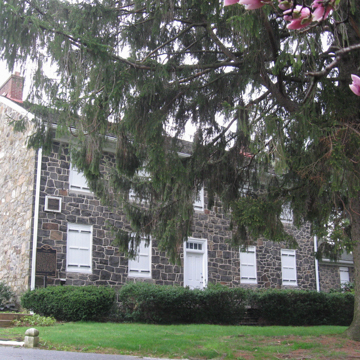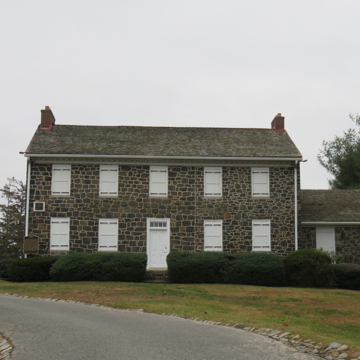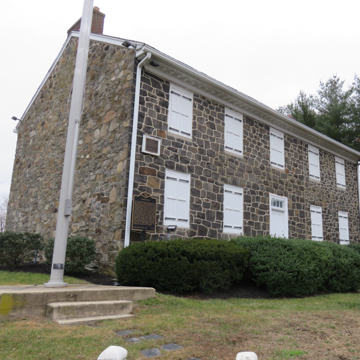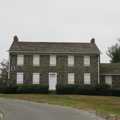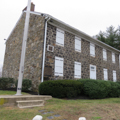Signer of the Constitution Gunning Bedford Jr. (one of ten contemporary “Gunning Bed-fords,” to historians' confusion) bought 250 acres as a summer place in 1786, when he was thirty-nine. He first occupied the two-story side-hall stone house in 1792 and enlarged it to five bays, including the so-called downstairs Ballroom on the south. The name Lombardy Hall probably refers to a double row of poplar trees once planted before the door. An exceptional Adamesque chimney-piece was installed in 1820, eight years after Bedford's death here. Over the generations, the estate was whittled down, and a cemetery was created (1889), the dwelling serving as a morgue. Eventually, the crumbling house was occupied by vagrants. Emilio Capaldi purchased it in 1966 with hopes for restoration, but his death put an end to those plans. A new Masonic lodge created to serve the booming suburbs bought Lombardy Hall the next year as the only home of a colonial first Grand Master owned by a Masonic organization. Restored by 1986, the National Historic Landmark is occasionally open to the public.
You are here
Lombardy Hall
If SAH Archipedia has been useful to you, please consider supporting it.
SAH Archipedia tells the story of the United States through its buildings, landscapes, and cities. This freely available resource empowers the public with authoritative knowledge that deepens their understanding and appreciation of the built environment. But the Society of Architectural Historians, which created SAH Archipedia with University of Virginia Press, needs your support to maintain the high-caliber research, writing, photography, cartography, editing, design, and programming that make SAH Archipedia a trusted online resource available to all who value the history of place, heritage tourism, and learning.















